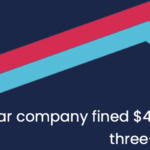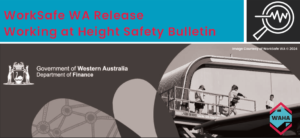
Article By Association Secretary and Strategic Programs Manager, Deborah Chick.
Working at heights presents unique challenges, particularly in safety management, making regular equipment inspection vital to ensuring a safe and compliant work environment. Without proper oversight of equipment like harnesses, ropes, carabiners, and anchor points, workers are exposed to increased risks of accidents and injuries. Organizations like the Working at Heights Association (WAHA) emphasize the importance of strict equipment inspection protocols to uphold safety standards.
In this article, we explore the critical aspects of equipment inspection, focusing on best practices and guidelines that align with industry standards. You can learn more about these standards and regulations by exploring WAHA’s website.
Why is Equipment Inspection Important?
In any work environment that involves heights, faulty or worn-out equipment can lead to severe consequences, including falls and other potentially fatal incidents. Inspections ensure that all equipment used in working at heights is safe, reliable, and compliant with the relevant standards. Regular equipment checks not only protect workers but also help organizations avoid legal repercussions from non-compliance with safety regulations.
Some key reasons why equipment inspections are essential include:
- Preventing equipment failure: Regular checks identify wear and tear before it becomes a hazard.
- Ensuring compliance: Inspections are often required to comply with national and international safety standards.
- Minimizing liability: Ensuring all equipment is up to date reduces legal and financial risks.
- Worker confidence: Employees feel safer knowing the equipment they are using is regularly inspected and maintained.
Types of Equipment Requiring Inspection
When working at heights, there are several key pieces of equipment that must undergo regular inspections. Each type has specific wear indicators and usage thresholds, making it vital to be familiar with the warning signs for each.
- Personal Protective Equipment (PPE)
Harnesses: Inspections should look for frayed webbing, damage to buckles, and signs of excessive wear. Ensure labels with weight limits and manufacturing dates are legible.
Lanyards and Shock Absorbers: Check for cuts, burns, or chemical exposure, and test shock absorbers for signs of activation.
Helmets: Helmets should be inspected for cracks, internal padding wear, and damage to chin straps. - Anchors and Connectors
Anchor Points: Ensure that the fixed or portable anchor points used for rope access or fall arrest systems are securely installed, undamaged, and tested for required load capacity.
Carabiners and Hooks: Examine for wear on gate mechanisms, corrosion, and deformation, ensuring they lock and unlock smoothly. - Ropes and Cables
Lifelines and Safety Ropes: Inspect for abrasions, cuts, and signs of UV degradation. Ropes should be checked for any contamination from chemicals or moisture, which could compromise strength.
Fall Arrest Blocks: Ensure the casing is intact, the retraction mechanism is functioning properly, and check for internal damage, particularly after a fall arrest.
Frequency of Inspections
According to guidelines provided by WAHA and other safety organizations, inspections must occur at regular intervals, varying based on usage frequency and environmental conditions.
Pre-Use Inspections – Workers shall perform an inspection of each item of personal and common use equipment before and after each use per ASNZS 1891.4 section 9.2. This simple step can detect obvious issues, such as broken or missing components.
Formal Periodic Inspections – For high-use or critical equipment, formal inspections should be carried out at least every 6-12 months by a competent person. These inspections are more thorough, often involving disassembly and testing.
Post-Incident Inspections – Any equipment involved in a fall or other significant incident must be inspected before being put back into service. In some cases, the equipment may need to be retired if its integrity has been compromised.
How to Conduct an Effective Inspection
1. Create a Checklist – Use a standardised checklist to ensure all components are reviewed during inspections. WAHA provides templates for our Members that can be customized for specific equipment types.
2. Document the Inspection – Documentation is critical to tracking the lifecycle and maintenance history of each piece of equipment. Record the inspection date, the condition of the equipment, any issues found, and the actions taken.
3. Involve a Competent Person – A competent person should carry out inspections, which means a person who has, through a combination of training, qualification and experience, acquired knowledge and skills enabling that person to correctly perform a specified task.
4. Take Equipment Out of Service if Necessary – If any issues are identified that compromise safety, the equipment must be removed from service immediately and either repaired or replaced.
Regular equipment inspections are not just about ticking off a regulatory requirement—they are about ensuring the safety and wellbeing of every worker operating at heights. By adopting a proactive approach to equipment inspection and maintenance, you not only comply with WAHA and other industry regulations but also foster a culture of safety that can prevent life-threatening accidents.
For more information on best practices and inspection standards, you can subscribe to the Small Business Set of Australian Standards and review ASNZS 1891.4 Industrial fall-arrest systems and devices – Selection, Use & Maintenance, or review our Technical Bulletin on Equipment Inspection and Maintenance.






